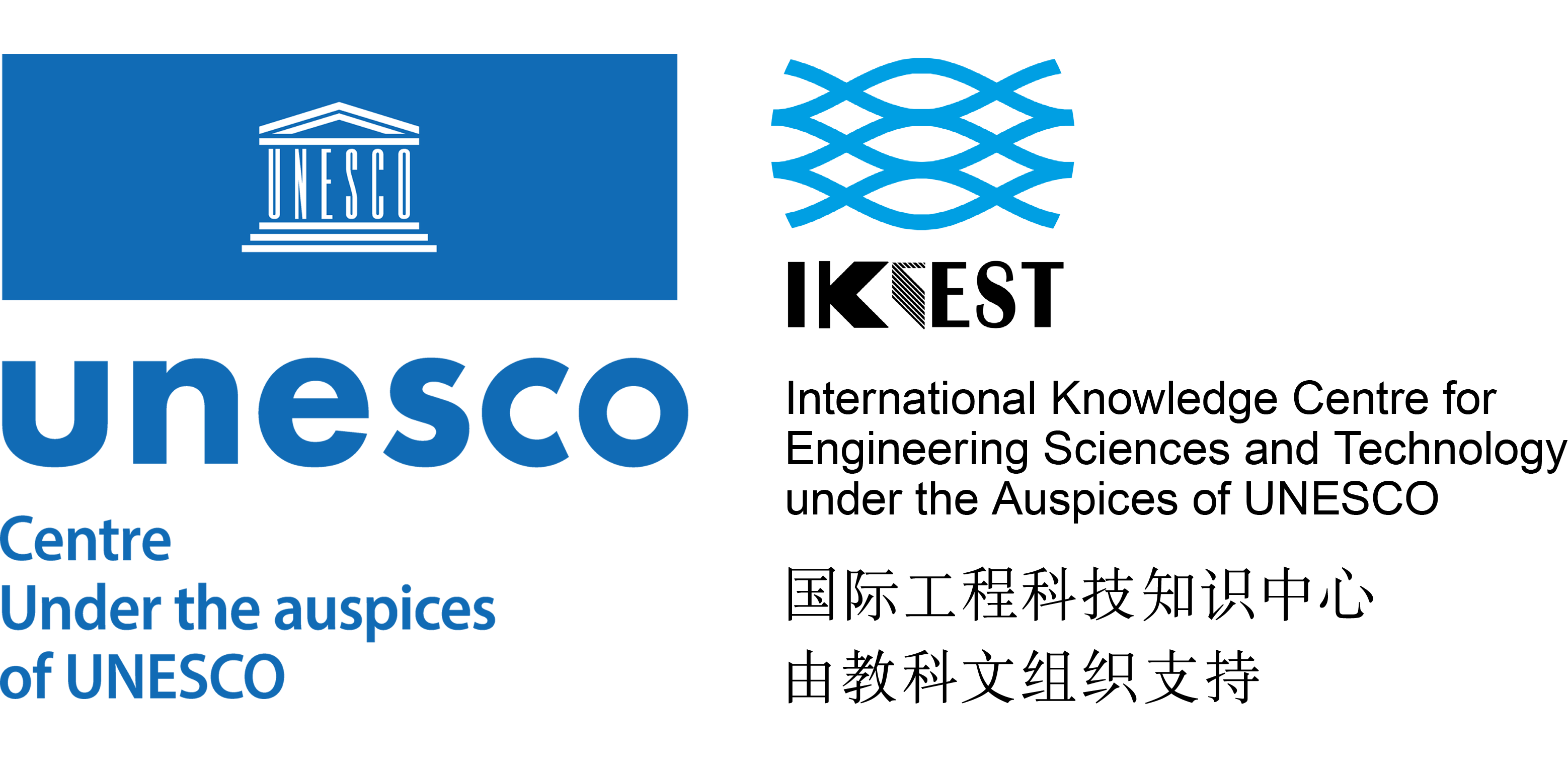Journal
Please choose volume & issue:
-
Sizing of a recuperative supercritical CO2 Brayton cycle as power conversion system for DEMO fusion reactor based on Dual Coolant Lithium Lead blanket
Abstracts:A modified recuperative supercritical CO
2 cycle for DEMO fusion reactor is analysed. A layout with just one recuperator is used, because of the relatively low temperature of the breeding blanket coolants. The proposed cycle is able to integrate several thermal sources with different temperature ranges and includes two kinds of thermal energy storage to overcome the pulse operation: a two-tank molten salt storage and a concrete storage. The design point is obtained using the Engineering Equation Solver (EES) environment, which allows to use pure substance models for CO2 , helium and water. Once the design point is calculated, the sizing of pipes, heat exchangers, turbomachines and energy storage systems has been performed in order to obtain a preliminary estimation of the layout and its complexity. So, the power conversion system has been split into four equal parts in order to use commercial pipe diameters. Even though Printed Circuit Heat Exchangers (PCHE) have been used, extremely large sizes have been obtained, especially for the HTR recuperator. These sizes contrast with the small values obtained for the turbomachines, whose preliminary design has been carried out, using the AXIAL™ meanline design software. In addition, the two largest heat exchangers are divided into serial and parallel configurations when assessing the allocation of the components of the power conversion system to reduce the footprint. An average electric efficiency (including pulse and dwell period) of 28.25% has been reached. The required mass of molten salt per each power conversion subsystem is 2568 t, while the mass of concrete is 833 t. Regarding the footprint, 85 × 170 m2 are required for each power conversion subsystem, including the storage systems. -
Magnetic field of heliotron with irregular helical coil pitch
Abstracts:The paper presents the results of numerical calculations on the magnetic field of a heliotron with a helical coil pitch
L 0 , which comprises a helical coil section named as anL -section, where the helical coil pitchL differs fromL 0 , i.e.L < L 0 . The calculations have shown that within theL -section the real preconditions exist permitting to form both the plasma core of passing plasma particles and of the SOL plasma boundary being at the increased distance from the wall in the high magnetic field region. -
Thermo-hydraulic optimization study for a high heat flux unit of the K-DEMO divertor target
Abstracts:Exhaust the very demanding incident heat flux of about 10 ∼ 20 MW/m2 concentrated on the narrow area of the divertor target is one of the most challenging requirements in the fusion DEMO reactor. The divertor has to remove the plasma power within allowable temperature ranges of the comprising materials such as armor, heat sink, and coolant. To satisfy the requirement, the optimized design of the divertor is significant as well as the selection of the comprising materials. In the K-DEMO (Korean fusion demonstration reactor), the target peak heat flux of 10 MW/m2 was set in the steady-state operation and a water-cooled divertor concept employing the tungsten monoblock has been primarily considered. RAFM (reduced activation ferritic martensitic) steel has been considered the primary candidate as heat sink material and CuCrZr has been the second best plan in the K-DEMO divertor. The purpose of this study is to derive optimum design for two design options: RAFM and CuCrZr. To carry out the design optimization based on thermo-hydraulic and statistical analyses, input parameters such as top thickness and lateral thickness of monoblock and thickness of coolant tube and output parameters such as maximum temperatures of monoblock and coolant tube are defined. In the parameter correlation analysis, regression equations defining the relation between the input and output parameters were derived with statistical values. Finally, the optimized designs for CuCrZr and RAFM models satisfying objectives and constraints were derived by the response surfaces optimization. The optimized designs applying the derived design parameters showed the designs satisfy the thermal requirement.
-
Development and implementation of Supersonic Molecular Beam Injection for EAST tokamak
Abstracts:As a method for plasma density control, Edge Localized Mode (ELM) mitigation and refueling, a Supersonic Molecular Beam Injection (SMBI) system is successfully developed and implemented for the Experimental Advanced Superconducting Tokamak (EAST). The SMBI is designed to produce a 400–1200 m/s molecular beam of hydrogen/deuterium for injecting into the plasma. An innovative system for measuring the injected particle number is also developed to increase the measuring accuracy of SMBI. In addition, a movable structure of the nozzle is designed to adjust the distance between the nozzle and plasma, in order to improve the fueling efficiency of SMBI by decreasing this separation distance. The successful implementation of SMBI provides an important tool for studying plasma density feedback control and ELM mitigation on the EAST campaign. To the best of our knowledge, the engineering design process of the SMBI system on the EAST has not been reported previously; therefore, the structure, implementation details, and the test results of the SMBI system are presented herein for the first time.
-
Design update and thermal-hydraulics of LLCB TBM first wall
Abstracts:The First Wall (FW) of Indian Lead Lithium Ceramic Breeder (LLCB) Test Blanket Module (TBM) is a U-shaped structure made of India specific Reduced Activation Ferritic Martensitic Steel (IN-RAFMS). As the FW is directly exposed to high heat flux from plasma, it is actively cooled by high pressure and high temperature helium gas. Following the Conceptual Design Review (CDR) at ITER, some improvement on the design of LLCB TBM has been envisaged, this includes the FW design to reduce the operational load on helium cooling process systems. The optimization studies have been carried out selecting suitable channel size, shape and no. of flow circuits of FW to keep the FW temperature and pressure drop within the acceptable limits. The parametric study has been performed with different mass flow rates and channel configurations of FW. This analysis resulted in the reduction of mass flow requirement by about 38% of the current value. The optimized parameters have been used to carry out the thermal-hydraulic and thermo-mechanical analyses of the two selected configurations of FW using ANSYS code. The temperatures and stresses are found to be within the required limits. Finally, the detailed thermal-hydraulics of final selected design of TBM FW have been performed using ANSYS CFX to estimate temperature distribution along with the validation of analytically calculated pressure drop and Heat Transfer Coefficient (HTC). It is observed that the temperature distribution on FW obtained from the flow analysis in CFX and that obtained by performing thermal analysis in ANSYS using HTC from engineering correlations are similar. The detailed analysis of the variation of HTC along the flow length of the heat flux zone has also been discussed. This paper also discusses transient and accident thermal analysis of the updated design for some of the ITER scenarios and the temperatures have been found to be within the required limits.
-
Large plastic deformation blistering and helium retention in 5% tantalum doped tungsten under 60 keV helium ions implantation
Abstracts:Tantalum (5 mass-% Ta) doped tungsten and pure tungsten in comparison were exposed to 60 keV helium ions implantation with a fluence of 1.04 × 1022 ion m−2. It was obvious that the W-5%Ta featured large plastic blisters both in number and in size were significantly reduced. The reason for this phenomenon was that vacancies and their complexes introduced by tantalum dopants reduced the diffusion coefficient of vacancy and vacancy-helium complexes. On the other hand, tantalum formed atomic clusters in the tungsten matrix, becoming a second phase with higher helium trapping ability, which inhibited migration and growth of helium bubbles, preventing the formation of large helium bubbles. Furthermore, helium ions form He
n k m -
Modification on the contact model of LiPb and noncondensable gas in RELAP/SCDAPSIM/MOD4.0 and application to LOCA of China DFLL-TBM
Abstracts:In-TBM breeder box coolant leak is one of four reference accidents identified for China Dual-functional Lithium Lead Test Blanket Module (DFLL-TBM), which will result in the pressurization of the TBM LiPb breeding zones and cooling system. In order to analyze In-TBM breeder box coolant leak accident, there is a need to simulate the mixing of liquid metal and non-condensable gas. While the current system safety code RELAP/SCDAPSIM/MOD4.0 which was initially designed to predict the behavior of light water reactor systems is incapable of modeling the mixture of liquid metal fluids and non-condensable gas. This paper first briefly introduce the reason for RELAP/SCDAPS/MOD4.0’s incapability of modeling liquid metal in contact with a non-condensable gas. Then, a solution to solve the problem and the modification of the RELAP/SCDAPSIM/MOD4.0 code is proposed. Several typical problems involving liquid metal in contact with helium were simulated and the results demonstrate the feasibility and validity of the modified RELAP/SCDAPS/MOD4.0 in modeling the mixing of liquid metal and non-condensable gas. Last but not least, the modified RELAP/SCDAPS/MOD4.0 is used for transient analysis of In-TBM breeder box coolant leaks. Since both lead-lithium eutectic alloy and helium serve as TBM coolants, the Lithium Lead Cooling System (LLCS) and the Helium Cooling System (HCS) were modeled to investigate the thermal-hydraulic characteristic of the TBM system and its influence on ITER safety under the accident conditions. Results show that LLCS pressurization during In-TBM breeder box coolant leak is adequately handled by the safety accessories provided in LLCS and the highest temperature of the first wall is far below its melting point during the accident process.
-
CFETR integration design platform: Development of space analysis module
Abstracts:Space allocation is important in the design of a fusion reactor, where numerous components operate under complex conditions, including a strong magnetic field, high-energy neutron irradiation, and a wide temperature range (4.5 K at the magnet and ∼300–500℃ at the blanket). To ensure the consistency of the China Fusion Engineering Test Reactor (CFETR) design, multi-component interference checks and distance measurements must be routinely performed. In this paper, a space analysis module is developed on the CFETR Integration Design Platform to provide the space analysis function for both rigid and deformed components (using the Representative-Triangles method). The example of the space allocation of a vacuum vessel (VV) and a thermal shield (TS) is demonstrated. The deformation due to heating under the bake-out condition is considered (during operation, heating and swelling due to radiation also cause deformation). With the input from the component design module, the space analysis can be well-performed for both rigid models and thermal deformation results (under the simplified boundary condition). Through iteration between the component design modules and the space analysis module, a preliminary designed clearance of 40 mm between the VV and TS is insufficient owing to the deformation during bake out, and the optimized clearance increases by a factor of two.
-
Neutronics analysis of the ITER Collective Thomson Scattering system
Abstracts:The Collective Thomson Scattering (CTS) will be the ITER diagnostic responsible for measuring the alpha-particle velocity distribution. Using mirrors, a powerful microwave beam is directed into the plasma via an opening in the plasma-facing wall. The microwaves will scatter off fluctuations in the plasma, and the scattered signal is recorded after transmission through a series of mirrors and waveguides. Several components of the CTS system will be directly exposed to neutron radiation from the plasma which can change the properties of the components and reduce their lifetime. In this paper, a neutronics analysis is presented for the CTS system. A study on the influence of different materials on the nuclear heat loads in the launcher mirror is also presented, along with the design of a simple cooling system. All the studies were conducted using the Monte Carlo program MCNP6. The outputs, in particular the nuclear heat loads, will be used to perform the thermal analysis of the system.
-
Cyclic behavior of ceramic pebble beds under mechanical loading
Abstracts:Uniaxial compression test (UCT) experiments were conducted along with Discrete Element Method (DEM) simulations. The objective was to investigate the effect of the material properties and of the blanket operational parameters (in terms of packing factor, pebble material/size, compressive load and bed height) on the mechanical response of breeder beds subjected to cyclic loading. UCTs were performed with the EU advanced and reference ceramic breeder materials. To investigate the wall effects on the cyclic response of packed beds, a parametric study was performed varying the bed height to pebble size ratio (H/d). To this end monosized commercial zirconia pebbles with different sizes were also used. The numerical experiments were carried out with the KIT-DEM code on pebble assemblies using mixed boundary conditions (periodic and rigid planes). The influence of the bed height, pebble size and pebble material were systematically evaluated to gain an insight about their influence on the macro and micro response of the beds. Thanks to the microscale numerical modelling the macroscale response is presented together with the micro response at the pebble scale. Good agreement was found between experiments and simulations and thus, the KIT-DEM was confirmed to be a reliable predictive tool for the study breeder bed related problems.
Hot Journals
- Risk Breakdown Matrix for Risk-Based Inspection of Transportation Infrastructure Projects
- Social Control in Outsourced Architectural and Engineering Design Consulting Projects: Behavioral Consequences and Motivational Mechanism
- 2022 Best Paper Award
- Hold-Ups and Failures in Negotiated Order: Unearthing the Nuances of Rework Causation in Construction
- Prevalence and Risk Factors for Poor Mental Health and Suicidal Ideation in the Nigerian Construction Industry
- CFRP–Cable-Stayed Bridge Hybrid with Partial Suspension and a Span Exceeding 3,000 m: Concept, Optimization, and Construction
- Impact of Wind Load Characteristics on Computed Bridge Stay-Cable Forces Used for Bridge Health Monitoring
- Weak-End and Frequency Detection of Elastically Supported Bridges by Contact Residual Response of Two-Axle Test Vehicle in a Round Trip
- Development of Performance-Based Fragility Curves of Coastal Bridges Subjected to Extreme Wave-Induced Loads
- An Analytical Model to Evaluate Short- and Long-Term Performances of Post-Tensioned Concrete Box-Girder Bridges Rehabilitated by an Ultrahigh-Performance Concrete Overlay
- Three-Dimensional Velocity Distribution in Straight Smooth Channels Modeled by Modified Log-Law
- Experimental Investigation on Flow Past Two and Three Side-by-Side Inclined Cylinders
- An Experimental Investigation of Rotor–Box Aerodynamic Interaction 1
- Modeling Gas–Liquid Flow Between Rotating and Nonrotating Annular Disks
- Entry Length Requirements for Two- and Three-Dimensional Laminar Couette–Poiseuille Flows
Advanced Materials (3,745)
- Structured Perovskite Light Absorbers for Efficient and Stable Photovoltaics
- Strategies for High‐Performance Solid‐State Triplet–Triplet‐Annihilation‐Based Photon Upconversion
- Atomic Engineering Catalyzed MnO2 Electrolysis Kinetics for a Hybrid Aqueous Battery with High Power and Energy Density
- Crystal Adaptronics: Global Performance Indices for Dynamic Crystals as Organic Thermal Actuators (Adv. Mater. 20/2020)
- Enlightening Materials with Photoswitches
Acta Astronautica (1,768)
- Mixed-integer trajectory optimization with no-fly zone constraints for a hypersonic vehicle
- Adaptive control design for active Pogo suppression of large strap-on liquid launch vehicles
- Machine learning based approach for modeling and forecasting of GPS–TEC during diverse solar phase periods
- Effect of two-dimensional micro-cavity surface on hypersonic boundary layer
- Investigation on burning behaviors of aluminum agglomerates in solid rocket motor with detailed combustion model








 User Center
User Center My Training Class
My Training Class Feedback
Feedback





